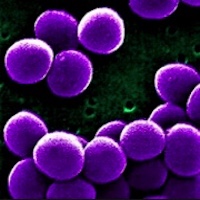Molecular characterization of methicillin-resistant Staphylococcus aureus isolated from the pig production chain in Northern Italy

Accepted: 28 November 2019
HTML: 39
All claims expressed in this article are solely those of the authors and do not necessarily represent those of their affiliated organizations, or those of the publisher, the editors and the reviewers. Any product that may be evaluated in this article or claim that may be made by its manufacturer is not guaranteed or endorsed by the publisher.
Authors
This study aimed to evaluate the molecular characteristics of methicillin resistant Staphylococcus aureus (MRSA) isolated in the swine chain in Northern Italy. A sample of 50 fattening units located in Lombardy was selected. Five cutaneous samples at slaughtering and three environmental samples at farm were collected from each unit giving a total of 250 and 150 samples, respectively. A total of 25 MRSA isolates were isolated from 400 samples, in 17 different fattening units. At farm, 12 out of 250 samples were positive for MRSA (4,8 %), and 13 out of 150 samples at slaughter were identified as MRSA (8,7 %), giving an overall incidence among samples of 6,25 % (n = 25). Molecular characterization was carried out using multi-locus sequence typing (MLST) and spa-typing. Outcomes showed that most of the isolates belonged to ST398, carrying spa-types t899, t011, t18498, t1939, t1200, and t304. Nonetheless, three isolates were identified as ST97 (t1730 and t4795), and one as ST30, showing spa-type t318. Furthermore, a novel ST was identified, namely 5422, showing spa-type t1730. Heterogeneity in genotypes within the same farm was also found in different fattening units, with concern for the possibility of the exchange of genetic determinants among different lineages. Genetic diversity among MRSA isolates in pig fattening units has been observed, highlighting the possibility that some isolates could be able to infect different hosts, including human.
Supporting Agencies
This project has been chartered by the Italian Ministry of Health, project “Classyfarm”.How to Cite
PAGEPress has chosen to apply the Creative Commons Attribution NonCommercial 4.0 International License (CC BY-NC 4.0) to all manuscripts to be published.

 https://doi.org/10.4081/ijfs.2020.8412
https://doi.org/10.4081/ijfs.2020.8412



